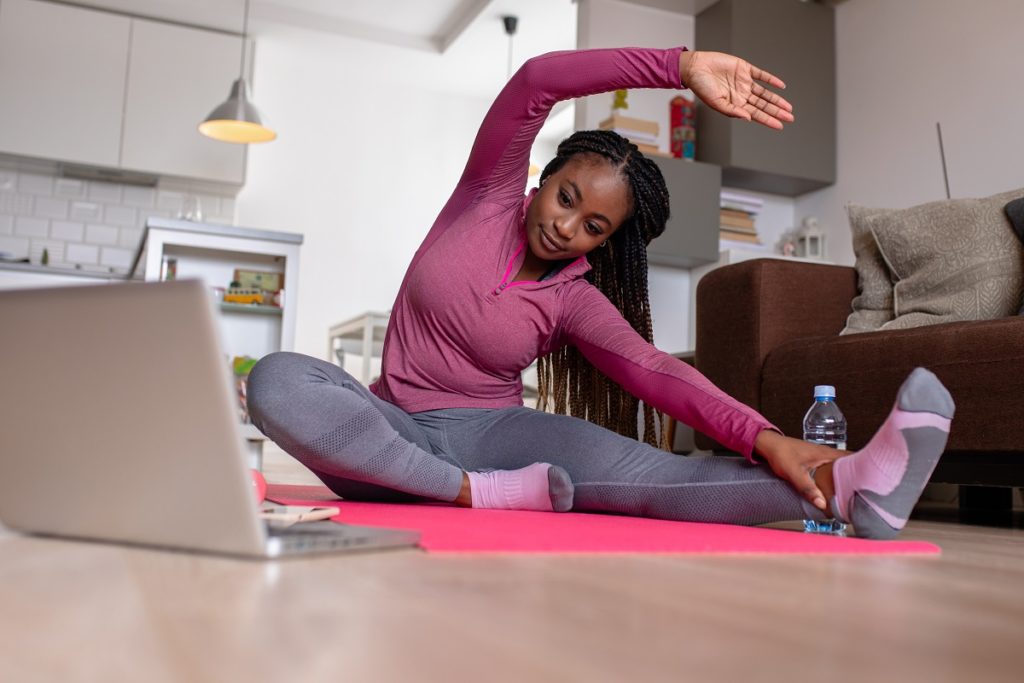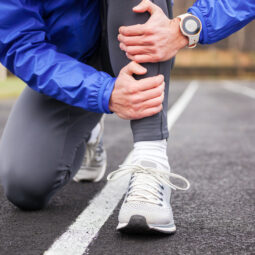By Robert Sandmeier, MD, orthopedics and sports medicine

Since childhood, we’ve been told how important it is to eat foods from all the different food groups, not just one of them. Broccoli is great for us, sure, but if we ate only broccoli, we’d just suffer from a different kind of malnutrition than people who ate only French fries. Our bodies need a balance of all the different food groups to work well and stay healthy.
The same is true for exercise. For real fitness, your body needs a balanced program that includes all of the major exercise groups:
- Aerobic exercise — essential for cardiovascular fitness and endurance
- Strength training — important for maintaining your muscles and bones
- Stretching — vital for your flexibility, mobility and coordination
Many people focus on only one of these. While something is definitely better than nothing, the gaps can leave you out of balance and open to injuries.
In the winter, for example, we see a lot of skiing and snowboarding injuries in people who are usually very good at these sports, but whose strength, flexibility or endurance isn’t what it used to be. In runners and walkers, we see over-use injuries happen when people use the same body parts the same way, every time they go out to get some exercise. Treating these injuries almost always includes modifying and varying your exercise program to fill in the gaps.
Your body needs balance
Mixing it up increases your body’s durability. If your only form of exercise is running, your body is missing out on some great fitness benefits that could not only reduce your risk of injury, but also make you an even better runner. With better strength and flexibility, all of your body parts work better to absorb the forces on your feet, ankles and legs and propel you smoothly forward.
Winter is a great time to work on broadening your program. You’re stuck inside, getting a little bored – what better time to try something new? All three types of exercise — aerobic, strengthening and flexibility — can be done indoors, with no equipment necessary.
Amp up your aerobic conditioning
When the weather outside is terrible, there are still plenty of ways to get your heartrate up indoors. Jumping rope, dancing, and jogging up and down stairs are three ways. Here are some others. If you can get outside, get out of your usual groove and vary your speed. Alternate some high-intensity sprints with slower speeds, skipping and sideways shuffling — you’ll get more out of a shorter, varied workout than you would from a longer session at a steady pace.
Stay strong
Many people purchase a set of small hand weights, do 50 reps now and then and call it good. But that kind of exercise is better for building endurance than strength. Real strength training — the kind that actually makes you stronger — requires higher resistance, so you can’t do 50 reps, but maybe only 15. You should do several sets and, if you are really challenging yourself, you should not be able to finish the last one. You can do strength training indoors, just about anywhere, using your own body weight for resistance. Pushups, chair dips, lunges and squats are four great strengthening exercises. Here are a few other no-weight workout ideas. There are plenty of others online for people of all ages and abilities.
Stretch yourself
Runners, walkers, cyclers and skiers are generally pretty good about stretching for a minute or two before or after to help avoid tight muscles. But very few have a dedicated program that actually improves flexibility for life. This is an area that just gets more and more important as you age. To get better at stretching, look at it just like the other types of exercise. You should be increasing both the time in a stretch and the range of the stretch to actually change your flexibility. Here is one top-to-bottom stretching program for beginners. You can find many others online.
We all have favorite activities. Whatever yours is, by all means, keep it up! Just remember to mix it up, too. A variety of activities will challenge and strengthen your body in a variety of ways. And that’s the best way to improve your overall fitness, avoid injuries and stay in the game.
Learn more in my Facebook live chat.


